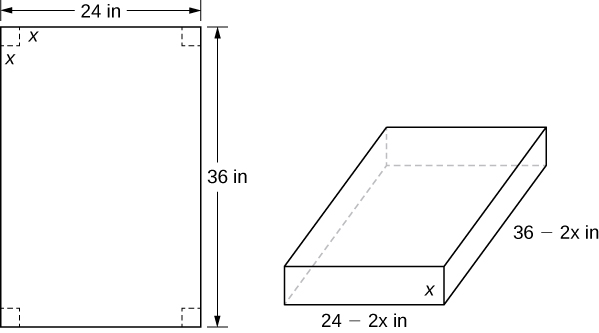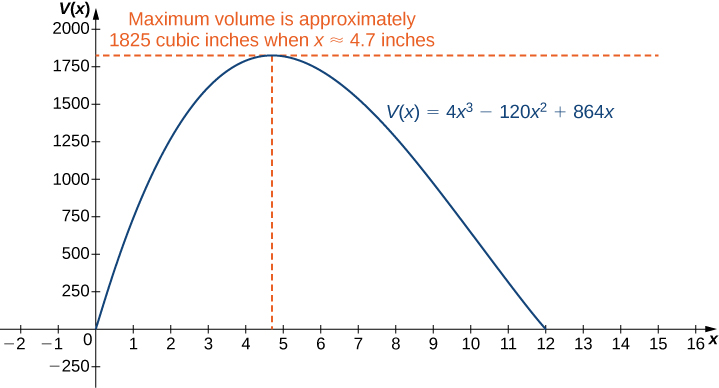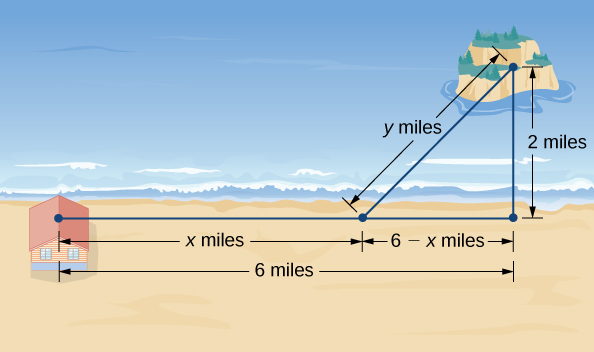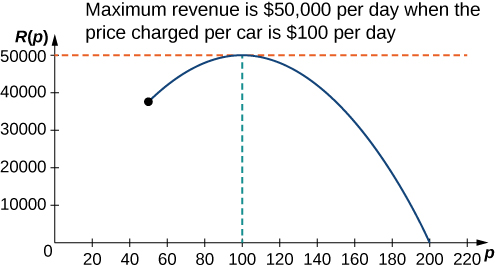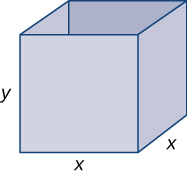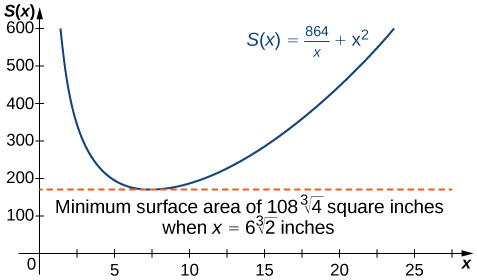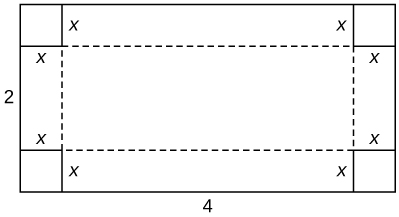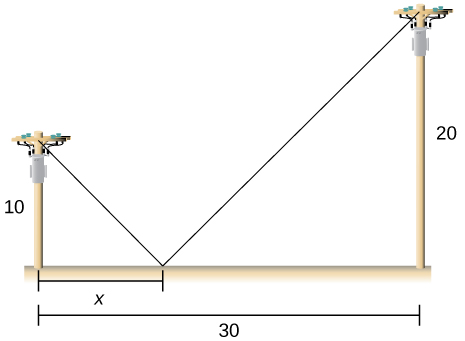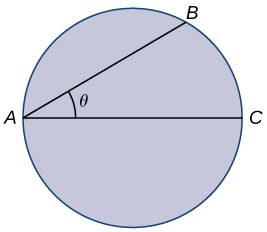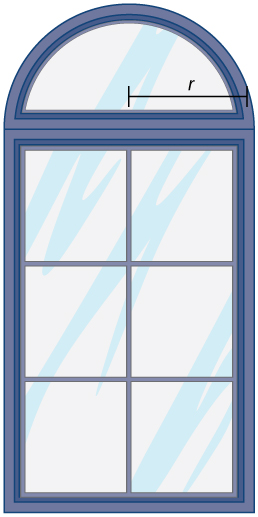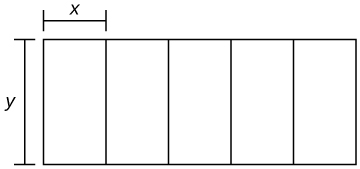A rectangular garden is to be constructed using a rock wall as one side of the garden and wire fencing for the other three sides ([link]). Given
ft of wire fencing, determine the dimensions that would create a garden of maximum area. What is the maximum area?
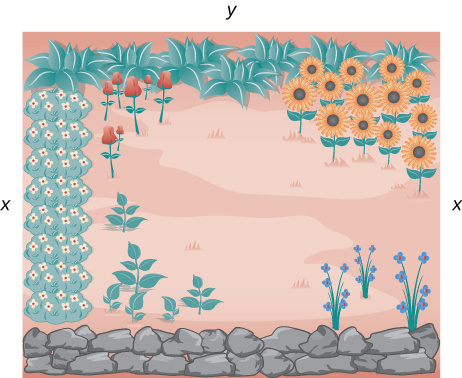
Let
denote the length of the side of the garden perpendicular to the rock wall and
denote the length of the side parallel to the rock wall. Then the area of the garden is
We want to find the maximum possible area subject to the constraint that the total fencing is
From [link], the total amount of fencing used will be
Therefore, the constraint equation is
Solving this equation for
we have
Thus, we can write the area as
Before trying to maximize the area function
we need to determine the domain under consideration. To construct a rectangular garden, we certainly need the lengths of both sides to be positive. Therefore, we need
and
Since
if
then
Therefore, we are trying to determine the maximum value of
for
over the open interval
We do not know that a function necessarily has a maximum value over an open interval. However, we do know that a continuous function has an absolute maximum (and absolute minimum) over a closed interval. Therefore, let’s consider the function
over the closed interval
If the maximum value occurs at an interior point, then we have found the value
in the open interval
that maximizes the area of the garden. Therefore, we consider the following problem:
Maximize
over the interval
As mentioned earlier, since
is a continuous function on a closed, bounded interval, by the extreme value theorem, it has a maximum and a minimum. These extreme values occur either at endpoints or critical points. At the endpoints,
Since the area is positive for all
in the open interval
the maximum must occur at a critical point. Differentiating the function
we obtain
Therefore, the only critical point is
([link]). We conclude that the maximum area must occur when
Then we have
To maximize the area of the garden, let
ft and
The area of this garden is

